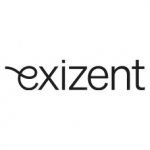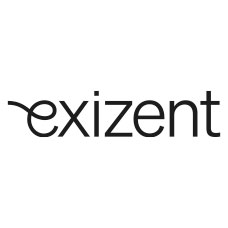The importance of customer feedback for Exizent’s design-led approach
The importance of customer feedback for Exizent’s design-led approach
Legal professionals need their interactions with technologies and other complex systems to be simple, intuitive, and pleasurable. Without these simple things, adopting technology into their current business processes will become more time consuming, aggravating, and difficult, leaving them behind the curve of tech adoption.
When done well, a design-led product enhances the user experience at each stage and sparks creativity of products and services that solve complex problems users need addressed. Exizent from the outset adopted a design-led approach, envisioning the service experience they should be delivering and scoping out what’s needed to deliver the target level of service.
We caught up with Exizent Product Manager, Gary Davidson to discover more about Exizent’s design-led approach and what it really means for their customers.
- What is Exizent’s design-led approach?
We’re on a mission to make the bereavement process easier for everyone, and in order to do that our main goal at Exizent is to solve issues that cause friction for our customers with both speed and quality. We do that through a design-led approach to focus our attention on the customer and the problem. Through an interactive, collaborative, and iterative approach we have customers at the centre of the design and that flows through the process of research, requirements, design, building and feedback. This cycle continues throughout projects to build up the platform iteratively to release customer value continuously, rather than in a big burst after a long period of development. Designing good services and products is not just about getting feedback at the start of an initiative. It is a constant process of improvement, development, and innovation. We want to design with the people that could use or benefit from the service to make sure not only that we solve their initial problems, but that we continue to provide solutions to new and emerging issues by building them together.
- Why is this approach beneficial to your customers?
It centres the development of the Exizent platform around our customers so everything we do is driven by problems and feedback. It also allows users to get functionality in smaller sections, in a shorter time than traditional software development, to then steer the development in the correct direction. This allows the user to experience the product and allows for more accurate feedback and analysis of user behaviours.
- How do you gather customer feedback and decipher what should be prioritised?
We work closely with our Customer Success team and our customers, who provide feedback that informs our priorities for new product features and enhancements. We also launched our Exizent Research Community in order to work with professionals in the industry, who don’t have to be Exizent customers but provide first-hand knowledge and experience of the problems.
Using these communities, we use a variety of methods at different stages of the development process. Customer interviews and prototype demos are used at the start of the process to enable us to then refine and prioritise how to create the solution to the problem and break that into releasable and useable parts.
During development we release functionality in useable blocks so the customer can try it for the task it is intended, during this phase we use task-based interviews to judge how user friendly the software is and gather feedback from its ability to cover the task the customers required it for. The priority here is easy, to gage how many users struggle with the task or feedback issues.
Finally, when the functionality is closer to being fully complete, we undertake more user testing to confirm and validate what has been delivered meets the original problem it was created to fix. Often this produces requests for future enhancements rather than urgent fixes and those are prioritised based on what other problems customers are facing.
- What has been the largest development to date and what was the process to get there?
Sometimes the parts that would seem small took the most time but the latest development into our Estate Accounts feature has had its challenges. As there is no standard way to conduct Estate Accounts, each legal professional had varying ways of managing and completing their accounts and this proved difficult for the design team to ensure we were delivering the intended product. By adopting a leading industry standard, we overcame this obstacle and hope to instil a standard that is easily digested by our customers clients.
In addition to this, the biggest part of new functionality, within this feature, which was increasingly complex was distributions. There were several considerations here including, looking at assets to check if they have been sold or passed to surviving joint owners, having a running total of capital, income and receipts which have already been distributed, are in the client cash account or have been received by an individual associated with the case. All of these considerations made for a highly complex feature.
To get to the first point of release there was an enormous amount of work, from up front requirements gathering, prototype creation and user testing, to the main build work which involved numerous team members and a lot of trial, error, and learning.
Distribution is currently in the first full iteration and there are plans for improving that in the future with the ability to add in distributions earlier in the case creation process as well as more automation in carrying out calculations.
Throughout the development of the Estate Accounts feature, we have been supported by users and research community members to feedback and test the feature in varying forms. As a service design-led product, receiving feedback and ensuring the product is going to be fit for purpose, and then some, is highly important to us. The feedback loop is very much still open for the Estate Accounts product.
Exizent’s mission is to improve the bereavement process for all involved. We continue to develop and improve our product offering so that we assist in improving the bereavement process. Sign-up to our mailing list to hear about our latest innovative product development due to be released imminently or book a demo and gain exclusive access to our new feature.



